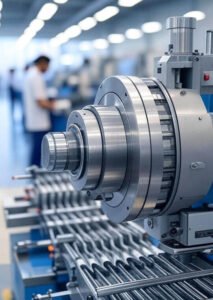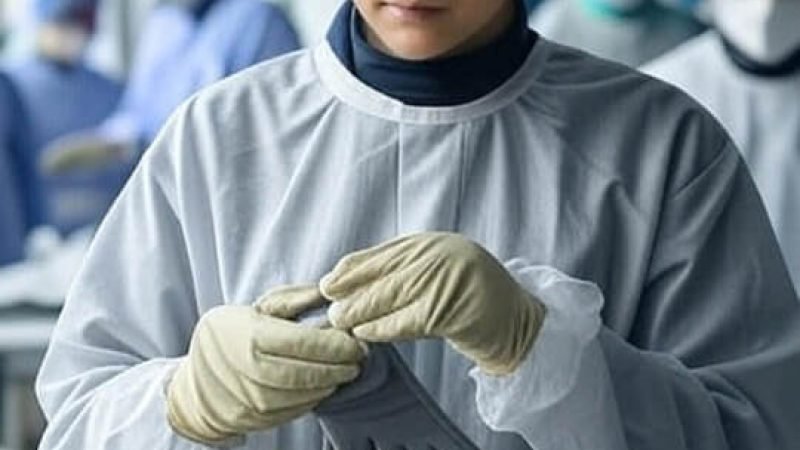What Accelerators Are Used in Glove Manufacturing?
Table of Contents
- Introduction
- Understanding Rubber Accelerators in Glove Production
- Primary Accelerators Used by Gloves Machine Manufacturer
- Thiuram-Based Accelerators
- Carbamate Accelerators
- Thiazole Accelerators
- Role of Secondary Accelerators
- Quality Standards and Safety Considerations
- Modern Innovations in Accelerator Technology
- Choosing the Right Accelerator System
- Environmental Impact and Sustainable Alternatives
- Future Trends in Glove Manufacturing Acceleration
Introduction
The glove manufacturing industry relies heavily on specialized chemical accelerators to achieve optimal rubber vulcanization and product quality. These accelerators are essential components that determine the physical properties, durability, and performance characteristics of various types of gloves, from medical examination gloves to industrial protective equipment. Understanding the role and application of different accelerators is crucial for manufacturers seeking to optimize their production processes and meet stringent quality standards.
Understanding Rubber Accelerators in Glove Production
Rubber accelerators are chemical compounds that speed up the vulcanization process during glove manufacturing. Vulcanization transforms raw rubber into a more durable, elastic material by creating cross-links between polymer chains. Without proper acceleration, this process would be too slow for commercial production or might not occur at all under normal processing conditions.
The vulcanization process typically occurs at temperatures between 100-180°C, and accelerators ensure that cross-linking happens efficiently within practical time frames. Different accelerator systems produce varying cure rates, modulus levels, and aging characteristics, making the selection of appropriate accelerators critical for achieving desired glove properties.
Primary Accelerators Used by Gloves Machine Manufacturer
Leading gloves machine manufacturer companies utilize several categories of accelerators, each offering distinct advantages for specific applications and glove types. The most commonly employed accelerator families include thiuram compounds, carbamates, thiazoles, and sulfenamides.
The choice of accelerator system significantly impacts production efficiency, product quality, and manufacturing costs. Modern glove manufacturers often employ accelerator combinations to achieve optimal balance between cure speed, physical properties, and processing safety.
Thiuram-Based Accelerators
Thiuram accelerators, particularly Tetramethylthiuram Disulfide (TMTD) and Tetramethylthiuram Monosulfide (TMTM), are widely used in glove manufacturing. These accelerators offer several advantages:
Key Benefits:
- Fast curing rates at relatively low temperatures
- Excellent aging resistance
- Good heat resistance properties
- Effective in sulfur-free vulcanization systems
TMTD is particularly favored for nitrile glove production due to its ability to provide rapid vulcanization without compromising the chemical resistance properties essential for protective gloves. However, these accelerators require careful handling due to potential allergenicity concerns.

Carbamate Accelerators
Carbamate accelerators, such as Zinc Diethyldithiocarbamate (ZDEC) and Zinc Dibutyldithiocarbamate (ZDBC), are extensively used in latex glove manufacturing. These accelerators offer:
Primary Advantages:
- Ultra-fast vulcanization rates
- Excellent processing safety
- Good storage stability
- Low bloom tendency
ZDEC is particularly valuable for dipped glove production, where rapid curing is essential for maintaining production efficiency. The fast cure rate allows for shorter drying times and increased throughput in manufacturing operations.
Thiazole Accelerators
Thiazole-based accelerators, including 2-Mercaptobenzothiazole (MBT) and its various derivatives, provide balanced performance characteristics. These accelerators are known for:
Notable Features:
- Delayed action properties
- Good scorch resistance
- Excellent modulus development
- Versatility across different rubber types
MBT and its derivatives are often used as secondary accelerators in combination with primary accelerators to fine-tune cure characteristics and improve processing safety.
Role of Secondary Accelerators
Secondary accelerators play a crucial supporting role in glove manufacturing by modifying cure characteristics and enhancing overall performance. Common secondary accelerators include:
Diphenyl Guanidine (DPG): Enhances cure rate and improves physical properties when used with primary accelerators.
Zinc Oxide: While primarily serving as an activator, zinc oxide also provides secondary acceleration effects and improves aging resistance.
Stearic Acid: Functions as an activator and processing aid while contributing to accelerator effectiveness.
The synergistic effects of combining primary and secondary accelerators allow manufacturers to achieve optimal cure profiles, improved physical properties, and enhanced processing characteristics.
Quality Standards and Safety Considerations
Modern glove manufacturing must comply with stringent international standards regarding accelerator usage and residual chemical levels. Key regulatory frameworks include:
ISO 13485: Medical device quality management systems
ASTM D6319: Standard specification for nitrile examination gloves
EN 455: European standard for medical gloves
FDA 21 CFR 880: US regulations for medical glove devices
Manufacturers must carefully monitor accelerator residuals to ensure compliance with maximum allowable limits and minimize potential allergenic responses. Advanced analytical techniques, including HPLC and GC-MS, are employed to verify accelerator levels in finished products.
Modern Innovations in Accelerator Technology
Recent developments in accelerator technology focus on improving safety profiles while maintaining performance standards. Notable innovations include:
Low-Protein Accelerator Systems: Designed to reduce allergenic potential while maintaining cure efficiency.
Powder-Free Compatible Accelerators: Optimized for modern powder-free glove production processes.
Enhanced Aging Resistance Formulations: Incorporating antioxidants and stabilizers to extend glove shelf life.
Green Chemistry Approaches: Development of more environmentally friendly accelerator alternatives.
Choosing the Right Accelerator System
Selecting appropriate accelerators requires consideration of multiple factors:
Glove Type Requirements: Medical, industrial, or food-grade applications have different performance needs.
Processing Conditions: Temperature, time, and equipment capabilities influence accelerator selection.
Regulatory Compliance: Different markets have varying requirements for chemical residuals and safety standards.
Cost Considerations: Balancing performance requirements with economic constraints.
Supply Chain Reliability: Ensuring consistent availability of accelerator materials.
Environmental Impact and Sustainable Alternatives
The glove manufacturing industry increasingly focuses on environmental sustainability and reducing the ecological footprint of accelerator systems. Current initiatives include:
Biodegradable Accelerators: Development of accelerators that break down more readily in environmental conditions.
Reduced Toxicity Formulations: Creating safer alternatives to traditional accelerator systems.
Waste Minimization: Optimizing accelerator usage to reduce waste generation and environmental discharge.
Life Cycle Assessment: Evaluating the complete environmental impact of accelerator systems from production to disposal.
Future Trends in Glove Manufacturing Acceleration
The future of accelerator technology in glove manufacturing is shaped by several emerging trends:
Nanotechnology Integration: Incorporating nanoparticles to enhance accelerator effectiveness and reduce required quantities.
Smart Accelerator Systems: Development of temperature and time-sensitive accelerators for improved process control.
Biocompatible Innovations: Creating accelerators with enhanced biocompatibility for medical applications.
Automation-Friendly Formulations: Designing accelerator systems optimized for automated manufacturing processes.
Sustainable Chemistry: Continued focus on green chemistry principles in accelerator development.
The evolution of accelerator technology continues to drive improvements in glove quality, manufacturing efficiency, and environmental responsibility. As the industry advances, the integration of innovative accelerator systems will play a crucial role in meeting growing global demand for high-quality protective gloves while addressing sustainability and safety concerns.
Understanding these accelerator systems and their applications enables manufacturers to make informed decisions about process optimization, quality enhancement, and regulatory compliance in the competitive glove manufacturing market.
